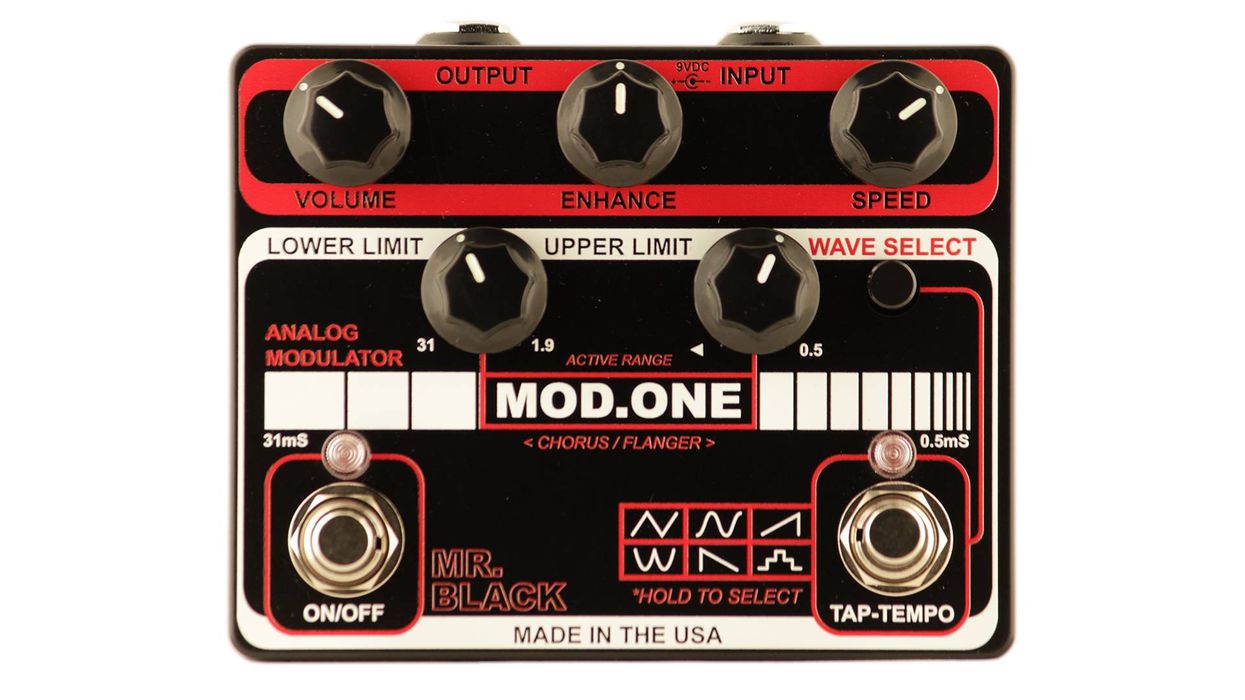Recorded direct into Focusrite Scarlett 2i4 interface into GarageBand.
Clip 1: Channel 1: gain 2 o’clock, tone 12 o’clock, level 1 o’clock. Channel 2 (engaged at :20 to :30): gain 2 o’clock, tone 11 o’clock, level 3 o’clock, freq 2 o’clock, sub level 4 o’clock.
Clip 2: Channel 1: gain 12 o’clock, tone 2 o’clock, level 2 o’clock. Channel 2 (engaged at :20 to :40): gain 12 o’clock, tone 3 o’clock, level 3 o’clock, freq 12 o’clock, sub level 12 o’clock.
RatingsPros:Dual distortion circuits. LED position markers. Variety of distortion flavors. Gain dials have balanced/even sweep. Cons: A bit pricey if both distortions aren’t being utilized. Street: $169 Fender Trapper Bass Distortion fender.com | Tones: Ease of Use: Build/Design: Value: |
In case you didn’t notice, Fender has been making a spirited splash with new pedal offerings these past few years—24 since 2018, to be exact. In aesthetic concert with its compadre stomps in the line, Fender’s Trapper Bass Distortion boasts a lightweight, anodized-aluminum chassis and LED-illuminated controls. Its standout feature, however, is that it runs two separate, analog distortion circuits. Both channels house tone, output, and gain knobs, but the second channel also features a pair of dials to manage the low-pass frequency and clean-output volume from the low-pass filter.
With channel 2 as my starting point, I found the sweet spot for some subtle, raspy grit with the gain and tone both set around noon. It’s a smooth and tight distortion with good response that I’d simply set-and-forget for a round of straight-ahead hard rock. Gradually increasing the gain for heavier flavors, I was steadily rewarded with a modern-leaning, pretty fierce crunch. While leaner with the gain maxed, wide open was still a very usable tone and not a soupy, suffocated mess. With the pedal’s higher-gain settings, the sub-level and frequency controls are there for fine-tuning the central sound and helping to maintain clarity and depth. The two channels are stackable, so there’s more control over the pedal’s gain structure and tone. The second channel is also an apt tool for those occasions we’re granted a solo, or for more aggressive sections of a song when a boost with an extra helping of distortion is needed. If you’re dual-dirt curious or simply interested in a fresh flavor of distortion, the Trapper is worthy of a look-see.
Test Gear: Gallien-Krueger 800RB, Orange OBC212, Focusrite Scarlett 2i4, Fender Precision, Schecter Banshee








![Rig Rundown: Russian Circles’ Mike Sullivan [2025]](https://www.premierguitar.com/media-library/youtube.jpg?id=62303631&width=1245&height=700&quality=70&coordinates=0%2C0%2C0%2C0)


























